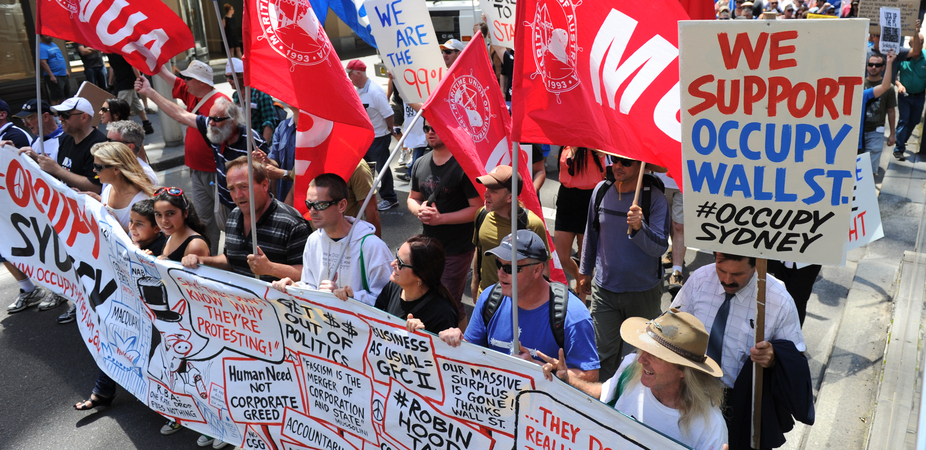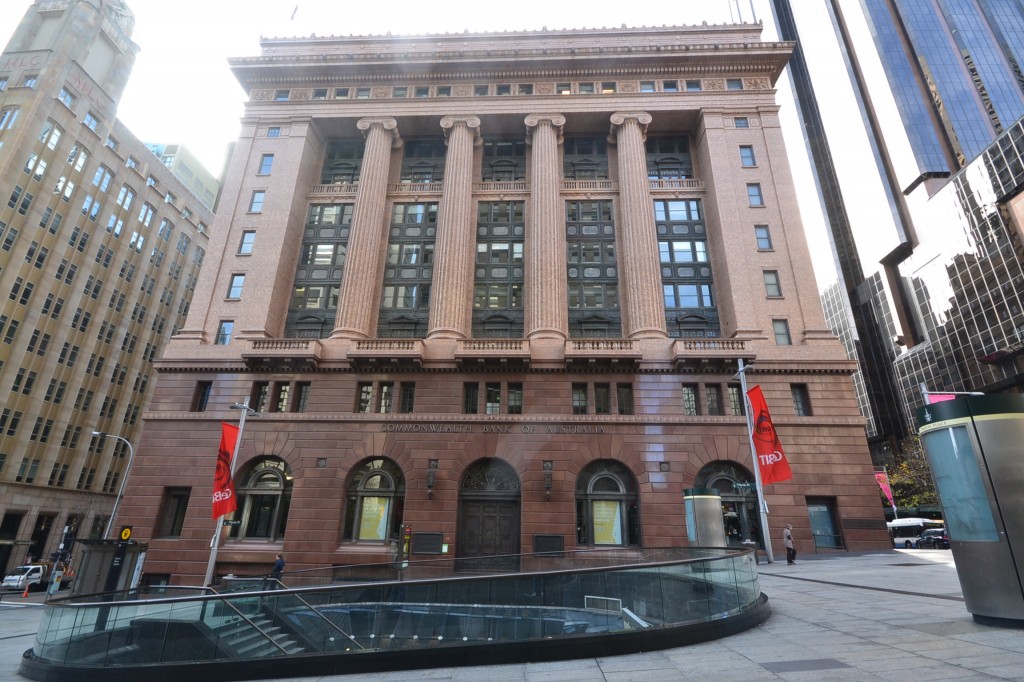How does Occupy look from the other side of the world? A few days ago, I walked into Gleebooks, the excellent alternative bookstore in Glebe, Sydney, and asked for books on Occupy. The well-informed staff person, who had tracked down my literary interests without difficulty, was thrown. There were some things on the American Occupy, she said, but nothing on Australia. Throughout my visit I encountered this polite bafflement.
Although everyone used the past tense about Occupy, Occupy Sydney still has a street presence in Martin Place. This is a canyon of colonial era banks, like Commonwealth Bank. The Bank epitomizes the transformation of imperial capital into financial globalization. Created as a colonial government enterprise in 1911, it was privatized beginning in 1991. Commonwealth introduced credit cards to Australia and has holdings in banks all over Australasia and now China. It generated some $6 billion in profits in 2011. Despite its Harry Potter-like teller windows with brass bars, Commonwealth is an aggressive globalizing institution. Surrounding it are extensive holdings of Fairfax Media, owned by mining magnate Gina Reinhardt, Australia’s richest individual. Need I go on?
In the midst of all this was what’s left of Occupy Sydney. It’s a table with literature, sign-up sheets, and a handy on-going collection of global Occupy actions. The people staffing the Occupation appear to be homeless and with other unmet needs, which suggested why people discreetly asked me about “improving the aesthetics” of Occupy.
In a new collection of essays called Left Turn, Australian activist Jeff Sparrow summarizes what he considers to be the strengths of Occupy
In Australia, the protests expressed, more than anything, a general alienation from the political process–but they extended as far as embracing the issues of Indigenous people, for whom discussions about occupation had a particular resonance.
Note the past tense.
Perhaps the difference stems from the relative sense of prosperity (or lack of it) in Australia and the US. Australia’s mining-driven boom has sustained high property prices, a very strong exchange rate and a palpable sense of big money for the usual suspects.
On the eve of Occupy Wall Street, the Wall Street Journal reported
The income of a household considered to be at the statistical middle fell 2.3% to an inflation-adjusted $49,445 in 2010, which is 7.1% below its 1999 peak.
In Australia, by contrast, according to a similarly one percent-oriented source:
The median or middle gross household income is about $68,600 p.a. There are only an estimated 473,200 households (or 5.6% of the population) with gross incomes in excess of $208,000 p.a.
Australia’s dollar is worth a little over one US dollar so the numerical difference is smaller than the actual one. Income disparities are less glaring than in the US (the top 10% makes four times as much as the lower 90, compared to 11 times as much in the US) but, according to government statistics, the gap is growing:
the net worth of low economic resource households had not increased significantly since 2003-04, while the average net worth across all other households had increased by 29%.
That’s 23% of the population falling behind the others. Without scoring points, it’s easy to see why the Occupy message might have resonated with those on the underside of the boom. What happens now that the mining boom is over and Chinese economy, engine of global growth, is slowing?
If you look back to last September, the suggestions being made would have been relatively easy for the neo-liberals to accept, I’ve often thought. A Presidential commission, Ad Busters wanted. Or the Glass-Steagall Act restored. So Paul Krugman, so little difference it would have made. Of course, they were too greedy, too self-satisfied. Next time, it won’t be so simple.


